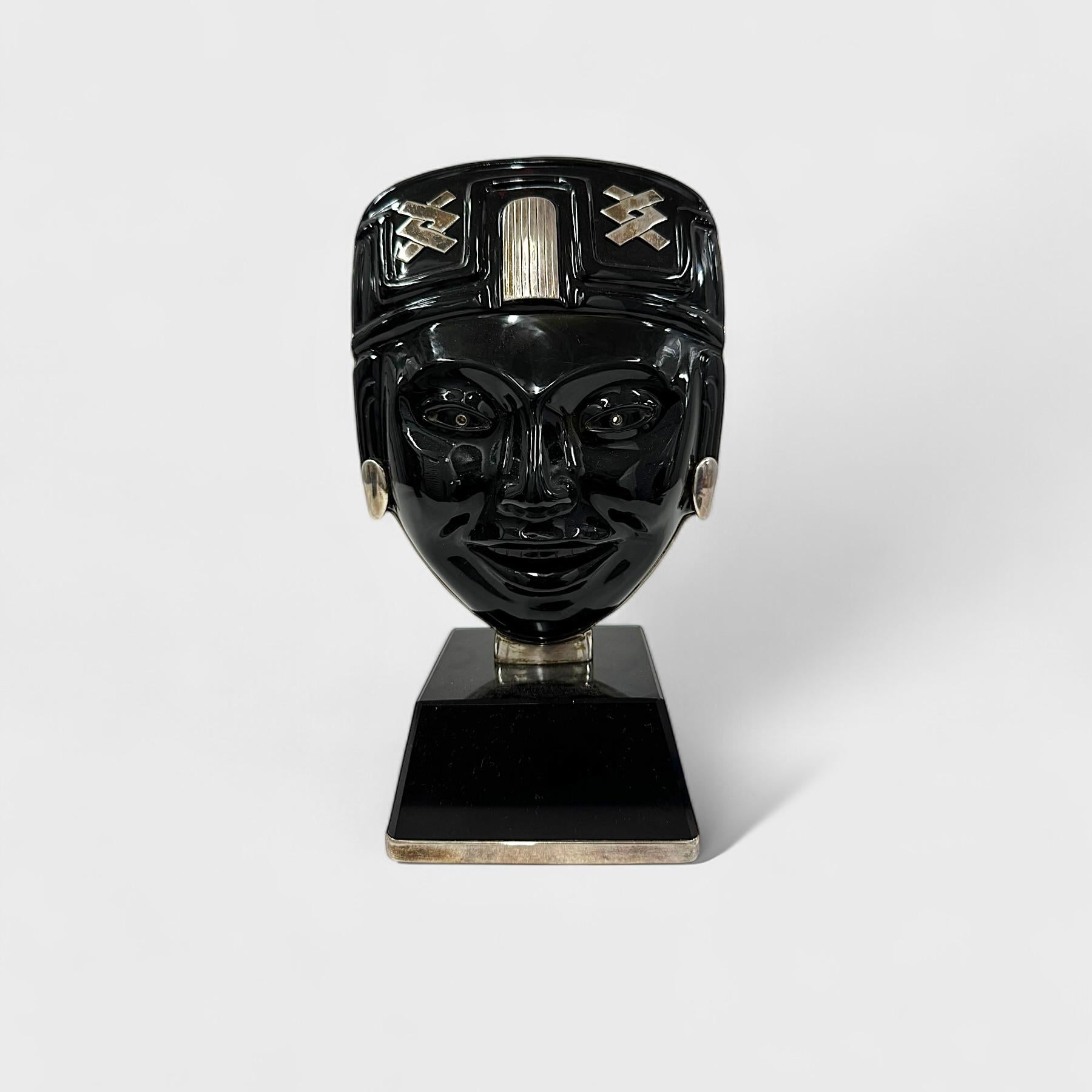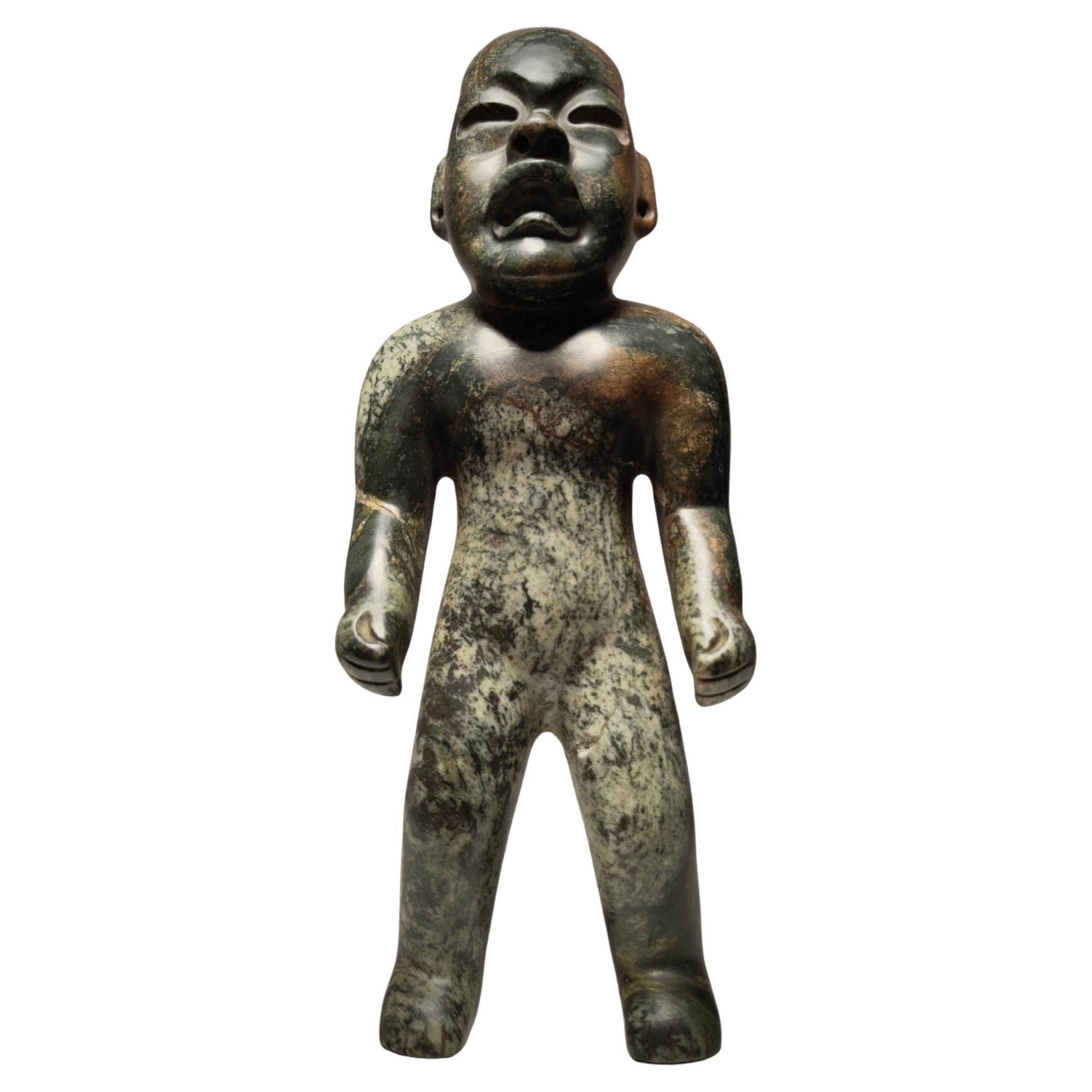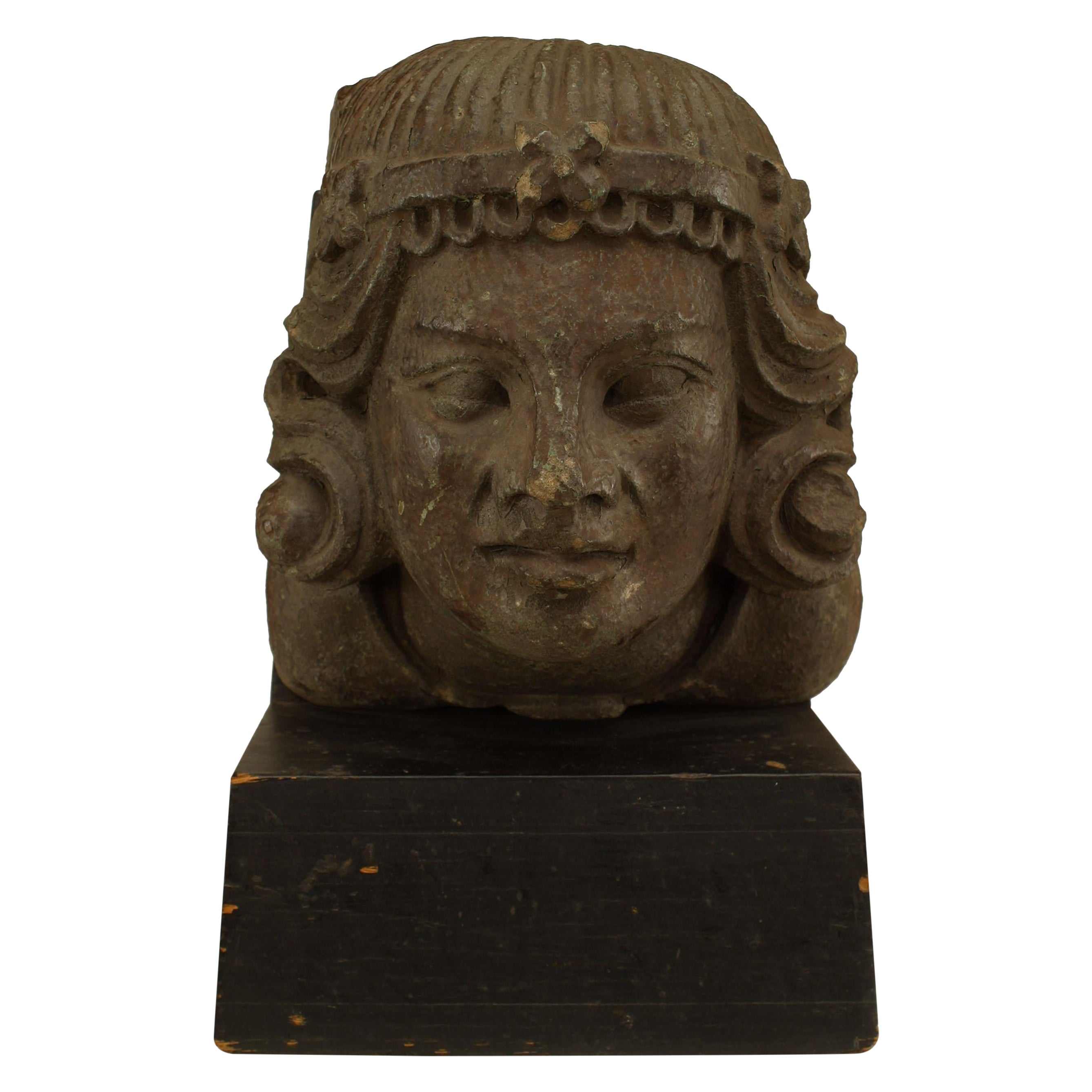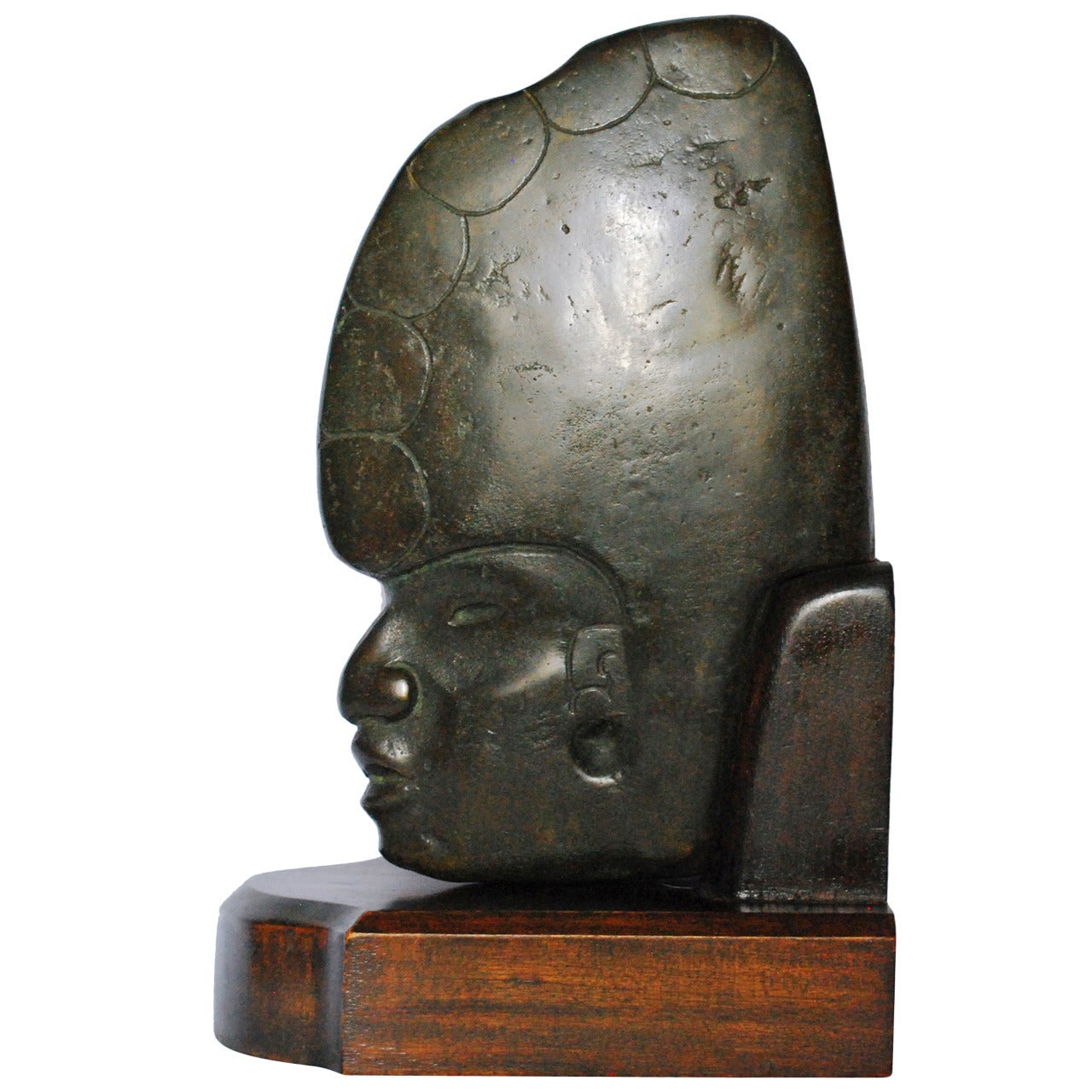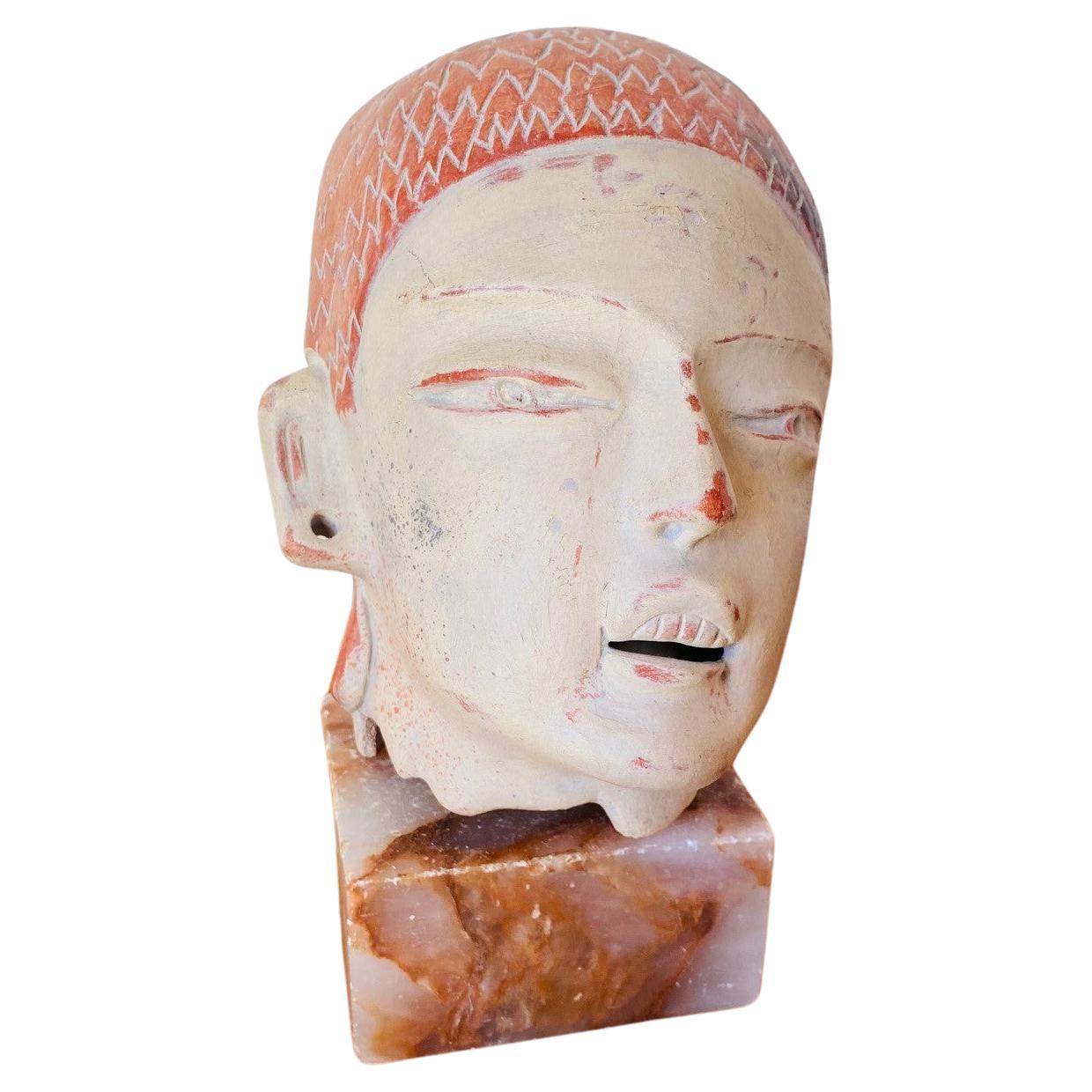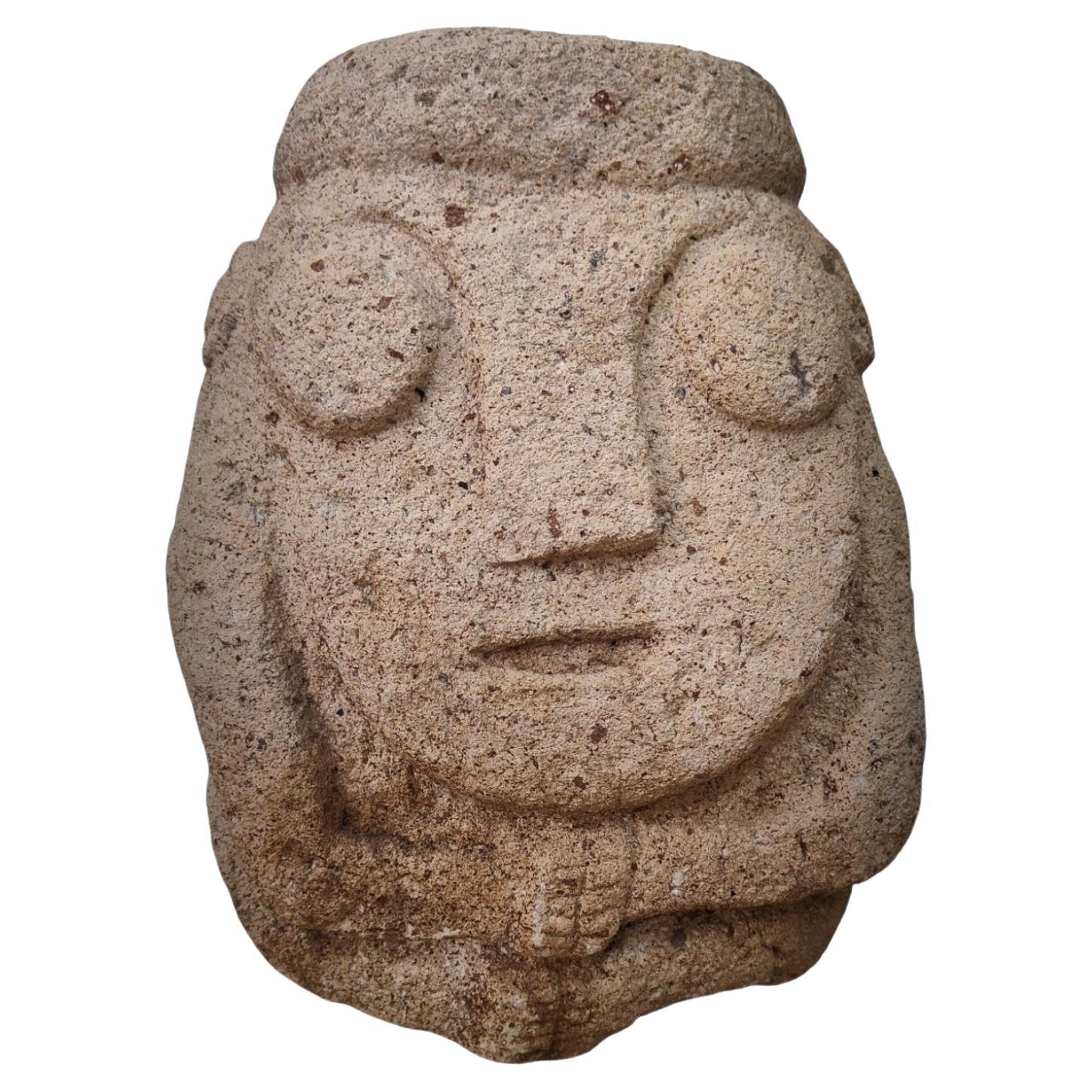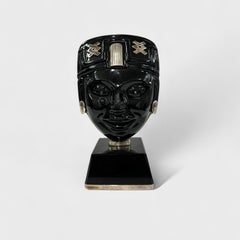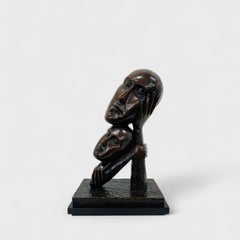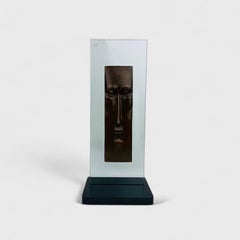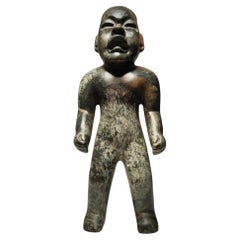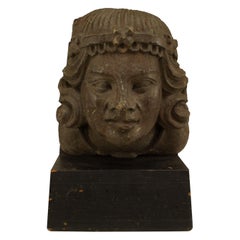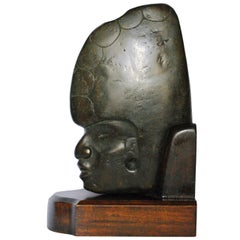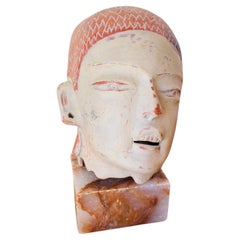Items Similar to Pre-hispanic Sculpture Head.
Want more images or videos?
Request additional images or videos from the seller
1 of 2
Ezequiel Tapia BahenaPre-hispanic Sculpture Head.
$2,200
£1,661.61
€1,920.33
CA$3,085.84
A$3,431.75
CHF 1,796.36
MX$41,863.17
NOK 22,571.95
SEK 21,231.83
DKK 14,334
About the Item
Pre-hispanic Sculpture Head. Medium: Azurite.
Guerrero, Mexico.
- Creator:Ezequiel Tapia Bahena
- Dimensions:Height: 11 in (27.94 cm)Width: 3.5 in (8.89 cm)Depth: 3.5 in (8.89 cm)
- Medium:
- Period:
- Condition:
- Gallery Location:Dallas, TX
- Reference Number:1stDibs: LU2825215682342
About the Seller
No Reviews Yet
Vetted Professional Seller
Every seller passes strict standards for authenticity and reliability
1stDibs seller since 2024
- ShippingRetrieving quote...Shipping from: Dallas, TX
- Return Policy
Authenticity Guarantee
In the unlikely event there��’s an issue with an item’s authenticity, contact us within 1 year for a full refund. DetailsMoney-Back Guarantee
If your item is not as described, is damaged in transit, or does not arrive, contact us within 7 days for a full refund. Details24-Hour Cancellation
You have a 24-hour grace period in which to reconsider your purchase, with no questions asked.Vetted Professional Sellers
Our world-class sellers must adhere to strict standards for service and quality, maintaining the integrity of our listings.Price-Match Guarantee
If you find that a seller listed the same item for a lower price elsewhere, we’ll match it.Trusted Global Delivery
Our best-in-class carrier network provides specialized shipping options worldwide, including custom delivery.More From This Seller
View AllTOTONACA PRE-HISPANIC MASK
Located in Dallas, TX
Ezequiel Tapia Bahena
Guerrero, Mexico.
Medium: Obsidian with Silver Details.
Weight: 2.8 lbs, Height: 9 in, Length: 3.3 in, Width: 3.3 in
Ezequiel Tap...
Category
21st Century and Contemporary Sculptures
Materials
Silver
The Tree Bronze Sculpture.
Located in Dallas, TX
The Tree Bronze Sculpture. Ed. 20/100.
Jalisco, Mexico.
Category
21st Century and Contemporary More Art
Materials
Bronze
Wall with Face Handle.
Located in Dallas, TX
Wall with Face Handle.
Jalisco, Mexico.
Category
21st Century and Contemporary More Art
Materials
Bronze
CERAMIC MASK
Located in Dallas, TX
Luis Castillo and Marcelo Guzman. Grey/White Ceramic Mask with Wood Base. Cordoba, Argentina.
Weight: 16.8 lbs., height: 25 in., length: 17 in. width: 10 in.
Category
21st Century and Contemporary Sculptures
Materials
Ceramic
MAYAN VASE
Located in Dallas, TX
Solis-Hernandez Family
Michoacan, Mexico
Weight: 8.6 lbs, Height: 18 in, Width: 10 in.
Technique: Ceramic
Category
21st Century and Contemporary Sculptures
Materials
Ceramic
DAVID ORDOÑEZ LACAYO INFANTA IN GUATEMALA
Located in Dallas, TX
David Ordoñez Lacayo. Infanta in Guatemala. Guatemala City, Guatemala. Carved and polychrome wood. Weight: 2 lb., height: 12 in., length: 7.5 in. width: ...
Category
21st Century and Contemporary Sculptures
Materials
Wood
You May Also Like
Important Olmec figure of Olmec ethnic dignitary from the preclassic period
Located in Madrid, ES
Important Olmec figure of Olmec ethnic dignitary from the preclassic period (2500-200 BC)
Important Olmec figure of dignitary of the Olmec ethnic group of...
Category
Antique 15th Century and Earlier Figurative Sculptures
Materials
Precious Stone
$14,732 Sale Price
20% Off
Pre-Colombian Stone Bust
Located in Queens, NY
Pre-Colombian style stone bust on black lacquered wood base (20th Cent)
Category
20th Century Unknown Tribal Busts
Materials
Wood
$1,800
Mesoamerican French Bronze Sculpture
Located in New York, NY
Mesoamerican French bronze sculpture. Vintage bronze casting of Mesoamerican stone hacha on original custom mahogany base. France, early 20th C...
Category
Early 20th Century French Sculptures
Materials
Bronze
Vintage Terracotta Pre-Columbian Reproduction Head Sculpture from Mexico
Located in San Diego, CA
Beautiful terracotta hand sculpted figurative head. Signed INAH MEXICO. Reproduction licensed under the National Institute of Anthropology and History in Mexico. Beautiful sculpted...
Category
Vintage 1970s Mexican Pre-Columbian Figurative Sculptures
Materials
Terracotta
Stone Carved Anthropomorphic Sculpture From The Recuay Culture Peru 400bc-400ac
Located in Madrid, ES
ANTHROPOMORPHIC SCULPTURE CARVED IN STONE OF THE RECUAY CULTURE PERU 400BC-400AC
Recuay is an archaeological culture of Ancient Peru that developed in the Sierra of the current Peruvian department of Áncash between 200 AD. C. until 600 d. C. It corresponds to the stage called Regional Developments, it has also been called the Huaylas or Santa culture.
Like the other Early Intermediate cultures, little is known about this culture. The most accepted position is that it was an extension of the Chavin culture, after the influence of the "White on Red" style in the region. Regarding the political aspect of the recuay, there is a hypothesis that questions their autonomy and maintains that Recuay would be part of one of the many political units that made up the Moche state.
The recuay style, characterized by its ceramics and stone sculpture, was initially described by Eduard Seler in 1893, based on ceramic specimens brought to the Ethnographic Museum in Berlin by Mariano M. Macedo. Seler named this style of pottery Recuay, based on the report that these pieces had been found in the town of Recuay. Later studies showed that this characteristic pottery was not originally from Recuay but from Copa, near Carhuaz, for which reason the name change to that of this town was proposed. Eventually the name of Huaylas was used for this culture. In 1919 Julio C. Tello explored the area and recovered lithic sculptures and Recuay-type ceramics. In the 1960s Rafael Larco Hoyle proposed changing the names of Recuay and Copa to Santa, arguing that the Recuay style had originated in the coastal regions of the Santa Valley. However, the name Recuay has persisted.
Its chronology is also highly debatable. The time of its origin between 0 and 200 AD is discussed. C. and its end or collapse is commonly set to 600 d. C. probably caused by the invasion of the Huari conquerors.
It encompassed almost the entire Callejón de Huaylas, a narrow valley fed by the Santa River and enclosed between two mountain ranges, the Cordillera Blanca to the west and the Cordillera Negra to the east. Its influence extended to the east to the Marañón river basin and to the west to the upper parts of the Santa, Casma and Huarmey valleys. To the north it reached the town of Pashash, in the province of Pallasca.
The Copa area, Marca district, Recuay province, Ancash department seems to have been the center or main nucleus of cohesion of this culture. The name of the culture would then be justified, derived from the province of the same name. Other important settlements were those of Huilcahuaín (near the current city of Ancash), Cátac, Araucay, Tambo, Jancu, Upayacu and Pashash (near the current city of Cabana).
Its main form of expression of art was through stone work (carving and masonry), inherited from its predecessor, the Chavín culture. In addition, they made sculptures in lumps that represent warriors with shields or trophy heads, with which they decorated their complex architectural constructions. They also made white clay pottery...
Category
Antique 15th Century and Earlier Figurative Sculptures
Materials
Stone
$41,955 Sale Price
20% Off
Pre-Columbian Ceramic Head Fragment
Located in Chicago, IL
This intriguing head fragment was once attached to a pre-Columbian bust or full effigy figurine. Earthenware figurines like this were made in great abundance throughout Mesoamerican history, serving a wide variety of purposes and functions from religious rituals to burial offerings.
Figurines like this commemorated important people and events across Mesoamerica, portraying individuals of different rank and status such as soldiers, merchants, bureaucrats, and occasionally divinities. This figure is adorned with an elaborate headdress, or coiffure, and ear spools...
Category
Antique 15th Century and Earlier Central American Pre-Columbian Figurati...
Materials
Ceramic
